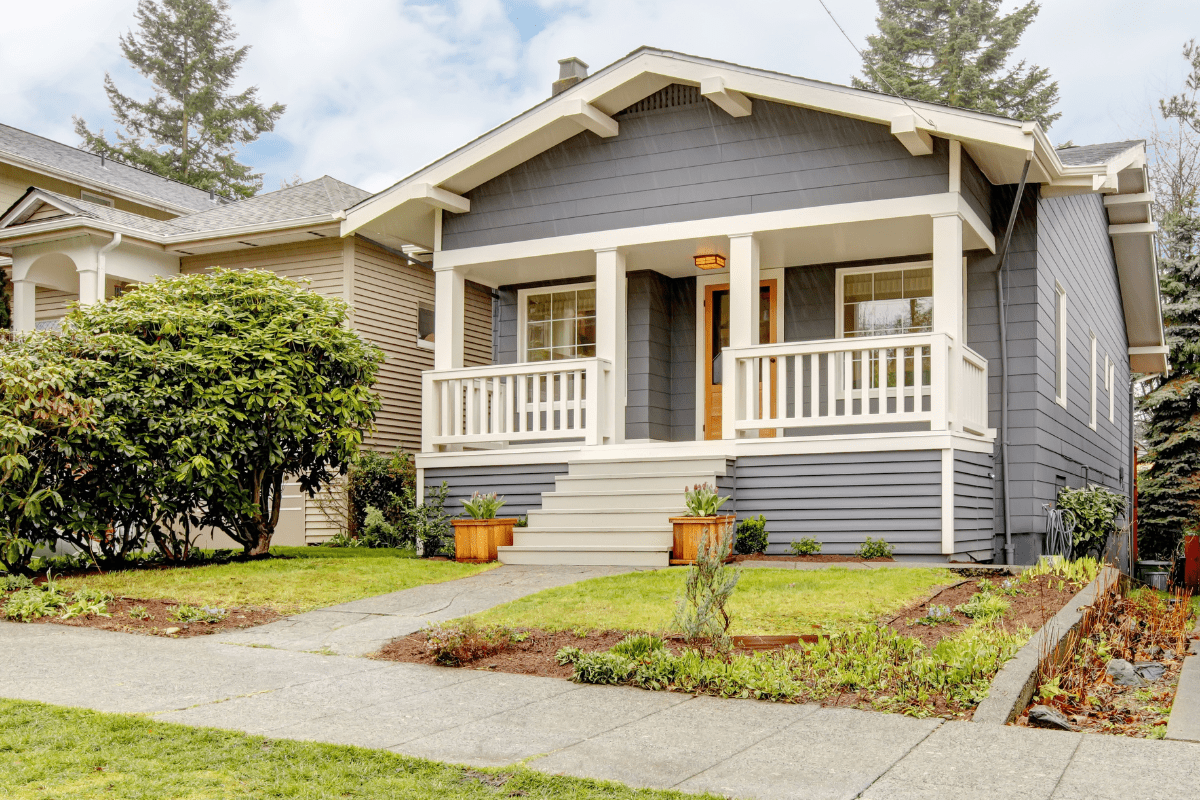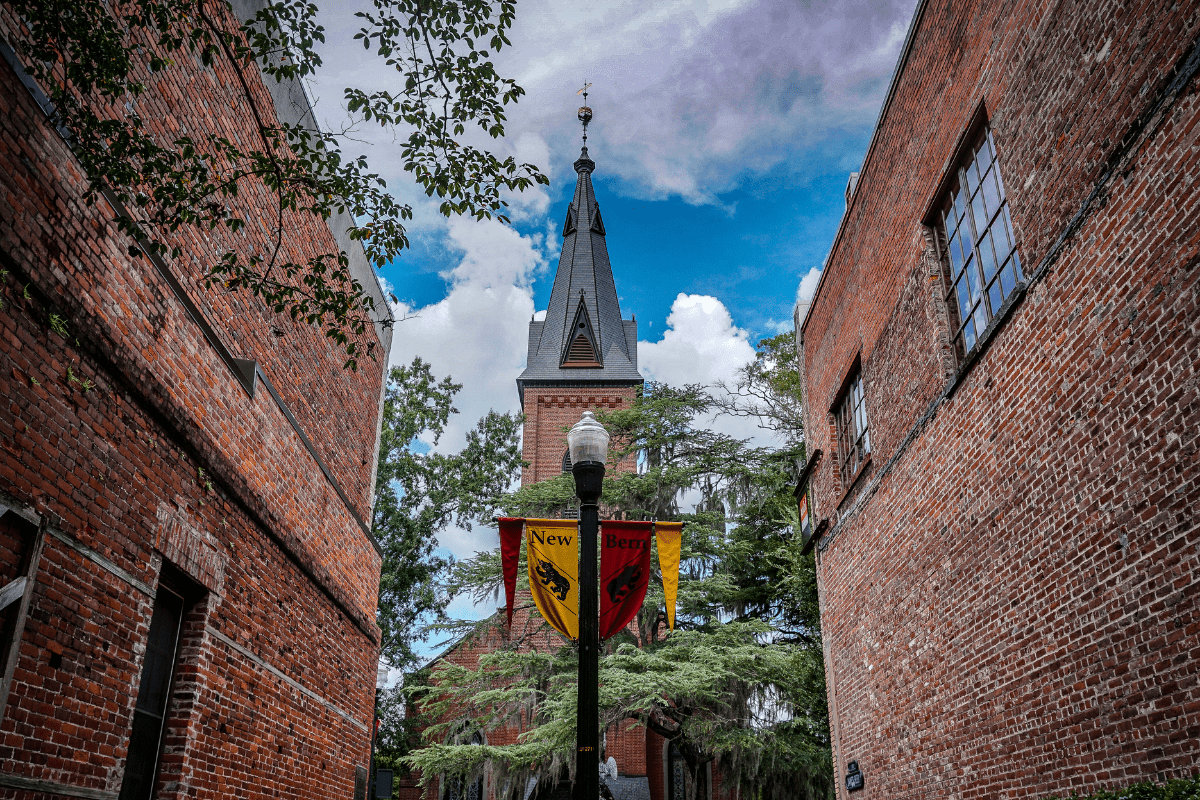Ever wonder why your neighbor's house looks like it belongs on a plantation while yours screams "1960s ranch paradise"? North Carolina's neighborhoods are basically architectural time machines, with 300+ years of building styles all mixed together like some kind of historical potluck.
Why you should care about architectural styles (hint: money)
Look, I get it. Architecture sounds about as exciting as watching paint dry on those Colonial shutters. But here's the thing: understanding what style house you're looking at can literally save you thousands of dollars when buying or renovating. Plus, you'll finally be able to sound smart at neighborhood parties when someone mentions their "authentic Craftsman bungalow."
North Carolina has over 130,000 documented historic structures. That's not just old houses… that's one of the most diverse collections of residential architecture in America. We're talking everything from log cabins built by German settlers to modernist glass boxes that look like spaceships landed in Raleigh.
The best part? You probably drive past examples of all seven major architectural styles every single day without realizing it. From the mountains to the coast, these buildings tell the story of who we are and where we came from. They're like three-dimensional history books, except you can live in them.
Colonial Revival: The style that won't quit
Why half your neighborhood looks like George Washington could drop by
Here's a fun fact: Colonial Revival is currently North Carolina's most popular architectural style. Yes, we're still obsessed with a style that started in the 1880s as a way to feel patriotic. It's like wearing your grandmother's vintage dress, except the dress is an entire house.
Colonial Revival homes are stupidly easy to spot once you know what to look for:
- Perfect symmetry (OCD approved)
- Center door with sidelights
- Multi-pane windows with shutters
- Columns that scream "important person lives here"
- Dormers poking through the roof
- That classic center-hall floor plan
The style got huge in Charlotte's Myers Park, which was planned in 1911 by some fancy urban planner named John Nolen. He basically said, "Let's make everything look historical but with modern plumbing," and everyone was like, "Brilliant!" Today, these neighborhoods still make people feel all warm and fuzzy about American history, even though most of these houses were built when cars already existed.
What's hilarious is that Colonial Revival homes are basically historical fanfiction. They take all the "best" parts of Georgian and Federal styles and mash them together with modern conveniences. Want a two-car garage? Just slap it on the side! Need a family room? Sure, why not! It's architectural comfort food, and we can't get enough of it.
Craftsman bungalows: When houses got cozy
The style that said "forget formality"
Between 1900 and 1930, North Carolinians collectively decided that maybe houses didn't need to look like museums. Enter the Craftsman bungalow style, which basically gave Victorian formality the finger and said, "Let's just be comfortable."
These houses are like that friend who always wears jeans to fancy restaurants. They're unpretentious, practical, and somehow still manage to look good. You'll know a Craftsman when you see:
- Deep overhanging eaves with exposed rafter tails (yes, showing your rafters was trendy)
- Those chunky tapered columns sitting on stone or brick piers
- Front porches deep enough to host a small wedding
- Natural materials everywhere… wood, stone, brick all hanging out together
- Built-in everything (these people loved their built-ins)
Asheville went absolutely nuts for this style, probably because they were already the Arts & Crafts capital of the South. The Grove Park Inn, built in 1913, is basically the Craftsman movement's ultimate flex. They literally built it out of boulders from Sunset Mountain because regular building materials weren't "natural" enough.
The best part about Craftsman homes? They were designed for actual humans to live in. No more separate parlors for impressing guests. No more formal dining rooms you only used twice a year. Just honest, livable spaces with gorgeous woodwork that makes modern tract homes look like cardboard boxes.
Ranch homes: When America discovered horizontal living
One story to rule them all
After World War II, Americans came home and decided stairs were overrated. The Ranch style exploded across North Carolina in the 1950s and 60s, spreading faster than kudzu on a summer day.
Ranch homes are the architectural equivalent of stretching out on the couch. Everything's on one level, rooms flow into each other, and there's always a sliding glass door to the backyard. They're basically saying, "Why go up when you can go out?"
Key features that scream "Ranch":
- Low, horizontal profile
- Huge picture windows
- L or U-shaped floor plans
- Attached garage (revolutionary!)
- Open floor plans before they were cool
The really wild thing? These houses that our grandparents thought were super modern are now considered vintage treasures. Mid-century modern features like post-and-beam ceilings and clerestory windows are making people lose their minds on HGTV. That orange shag carpet, though? Still not making a comeback.
The OG styles: Georgian and Federal
When houses wore powdered wigs
Before America was even officially America, North Carolinians were building Georgian style homes that basically screamed, "I have money and I want everyone to know it." These houses, popular from 1750 to 1800, were the McMansions of their day… except with way better proportions.
Georgian homes are like that person who color-codes their closet. Everything must be perfectly symmetrical:
- Five windows across, door in the middle
- Massive twin chimneys (symmetrical, of course)
- Fancy crown molding everywhere
- Center hallway for ventilation
The whole Georgian thing really took off when Governor William Tryon brought architect John Hawks to design Tryon Palace in New Bern around 1766. It was basically North Carolina's first "starchitect" moment. Hawks showed up with his fancy English ideas and suddenly everyone wanted their house to look like a mini palace.
Federal style (1780-1830) came next and was basically Georgian's cooler, more relaxed younger sibling. Federal architects discovered curves were a thing and started adding elliptical staircases and fanlight windows. It's like Georgian went to therapy and learned it was okay to loosen up a little.
Greek Revival: Democracy with columns
When America got really into ancient Greece
Between 1825 and 1860, Americans decided that nothing said "democracy" quite like copying Greek temples. The North Carolina State Capitol, built from 1833 to 1840, went full Greek god mode with massive columns and everything.
Greek Revival homes are pretty easy to spot:
- Columns. So many columns.
- Low-pitched roofs hiding behind triangular pediments
- Tall windows that practically touch the floor
- Everything painted white to look like marble
- A general vibe of "important stuff happens here"
The style worked perfectly with North Carolina's growing tobacco wealth. Plantation owners loved how Greek Revival made their houses look like temples to agriculture. Plus, those deep Southern porches weren't just for show… they actually kept houses cooler before air conditioning existed.
Fun fact: This architectural style was so tied to tobacco farming that North Carolina eventually had 500,000 tobacco barns by the 1950s. That's a lot of buildings dedicated to making cigarettes possible.
Victorian madness: More is more
When restraint went out the window
The late 1800s brought us Queen Anne Victorian homes, and honestly, these people did not understand the concept of "too much." These houses are like Victorian ladies' dresses… layers upon layers of decoration, with a few more layers thrown on top just because.
Queen Anne features that'll make your head spin:
- Towers (because why not?)
- Asymmetrical everything
- "Gingerbread" trim galore
- Multiple textures and materials
- Bay windows jutting out everywhere
- Fish-scale shingles (yes, really)
The Harper House in Hickory, built in 1887, is a perfect example of Victorian excess. It's got towers, it's got trim, it's got more decorative elements than a Christmas tree. These houses basically said, "Subtlety is for quitters."
But not everyone could afford a full Queen Anne experience. That's where Folk Victorian came in… same decorative ideas but on a regular person's budget. It's like Victorian style met reality and had to compromise.
Regional flavors: Because North Carolina is huge
Mountain style: Log cabins meet luxury
Up in the mountains, German and Scots-Irish settlers were building log cabins with dovetail notching while coastal folks were doing their Georgian thing. These weren't your Lincoln Logs cabins… these were sophisticated structures built to handle mountain weather.
Then the Gilded Age happened and rich people discovered Asheville. Suddenly you had the Biltmore House, America's largest private home, sitting in the same region as hundred-year-old log cabins. Talk about architectural whiplash.
Piedmont mill villages: Company towns with character
The Piedmont's textile mill villages created their own architectural style: practical worker housing that was standardized but not soulless. These little frame houses might look simple, but they housed the families that built North Carolina's industrial economy.
Charlotte grew from 7,000 people in 1880 to the biggest city in the Carolinas, largely thanks to textile money. All that red clay made perfect bricks, which is why so many Piedmont buildings are brick everything.
Coastal adaptations: When hurricanes dictate design
Down at the coast, houses had to deal with a whole different set of problems. The Outer Banks developed what they call the "Unpainted Aristocracy"… weathered cottages on stilts that could handle whatever the Atlantic threw at them.
These houses are engineering marvels disguised as beach shacks:
- Built on pilings for storm surge
- Natural cedar shingles that weather to silver
- Designed to let wind pass through
- Light enough to ventilate, strong enough to survive
Wilmington managed to preserve seven National Register historic districts, probably because their buildings were too stubborn to blow away.
The modernist bomb that hit the Triangle
When NC State got radical
In 1948, Henry Kamphoefner showed up at NC State's School of Design and basically said, "Let's blow up everything you think you know about houses." He recruited a bunch of avant-garde architects who started designing houses that looked like they came from the future.
Suddenly the Triangle had one of America's largest concentrations of modernist homes. Flat roofs! Walls of glass! Post-and-beam construction! Traditional North Carolinians were probably clutching their pearls while architects were winning design awards.
These modernist features seem normal now but were mind-blowing then:
- Floor-to-ceiling windows
- Open floor plans with no defined rooms
- Integration with the landscape
- Honest materials (no fake columns here)
- Geometric forms
The funny thing is, while intellectuals were building glass boxes, most North Carolinians were perfectly happy with their ranch homes and colonial revivals. But those modernist houses? They're now highly sought after by design nerds who'll pay top dollar for original Matsumoto or Catalano homes.
Materials matter: What North Carolina builds with
Local stuff makes local character
North Carolina's buildings look the way they do partly because of what we had lying around. Southern yellow pine covers 5 million acres and built basically everything wooden in the state. We're talking about a $900 million annual industry that's been going since colonial times.
Mount Airy's granite quarry, operating since 1743, produces that distinctive white stone with black flecks you see in government buildings and fancy houses. Pine Hall Brick, established in 1922, still pumps out 400 million bricks a year. That's why so many North Carolina buildings are either wood, stone, or brick… we literally make them here.
Climate shapes everything
Before air conditioning, North Carolina builders had to be clever about heat. That's why old houses have:
- 10-12 foot ceilings
- Deep porches for shade
- Separate kitchens (heat isolation)
- Houses one room deep (cross-ventilation)
- Strategic window placement
These weren't aesthetic choices… they were survival tactics. That's why a Georgian house in coastal Wilmington looks different from one in the mountains. Climate is a harsh architectural critic.
What's happening now (spoiler: we still love old styles)
The market loves tradition
Despite all our modern options, North Carolinians still prefer traditional styles. The median home price hit $370,000, and guess what's selling? Colonial Revivals. Craftsmans. Traditional stuff that looks like it has history.
Current trends include:
- Dark exterior colors (goodbye white everything)
- Smaller footprints with luxury finishes
- Smart home tech in old-style packages
- Sustainable materials and solar panels
- Mixed-use spaces for remote work
We had 165,000 new residents between July 2023 and 2024, and they're all looking for houses. Over 25,000 residential permits in just one quarter of 2024. That's a lot of new "old" style houses going up.
How to actually identify these styles
Listen to the experts (they know stuff)
Architectural historian Catherine Bishir talks about North Carolina's "remarkable resilient localism", which is a fancy way of saying we take national trends and make them our own. David Hill at NC State points out that our architecture shows "overlapping networks of cultural exchange," meaning styles blend and influence each other.
Sophie Piesse, a Carrboro architect, says to look at "roof shapes, window patterns, and entrance treatments" when trying to identify styles. That's actually solid advice. The roof alone can usually tell you what era you're dealing with.
Your house hunting decoder ring
When you're out looking at houses (or just being nosy about your neighborhood), here's what to check:
- Symmetrical with columns? Probably Colonial Revival
- Deep eaves with exposed rafters? Craftsman
- One story with attached garage? Ranch
- Tower with gingerbread trim? Victorian
- Flat roof with walls of glass? Modernist
- Can't tell? It's probably a mix
The State Historic Preservation Office has documented over 130,000 structures if you really want to dive deep. They've got surveys, databases, and enough architectural history to make your head spin.
Why this actually matters
Understanding North Carolina's architectural styles isn't just about impressing people at parties (though that's fun too). It's about understanding our communities, making smart renovation choices, and appreciating the people who came before us.
These houses are more than just shelter. They're physical evidence of our state's evolution from colonial outpost to modern economic powerhouse. They show how different cultures… English, German, African, and more… shaped how we live. They demonstrate how climate, materials, and human ingenuity combine to create homes that work.
Whether you live in a 1920s bungalow or a brand-new Colonial Revival, you're part of this ongoing architectural story. And honestly? That's pretty cool. Next time you drive through your neighborhood, you won't just see houses. You'll see history, culture, and maybe even understand why your neighbor spent six months restoring those original heart pine floors.
Now go forth and annoy your friends with your newfound architectural knowledge. You're welcome.





